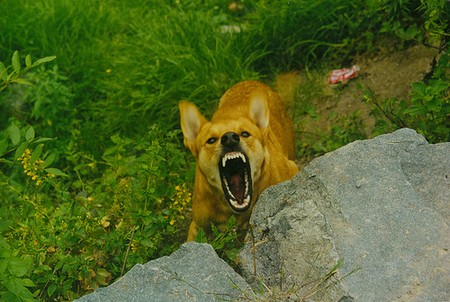In order to be safe in this new world, your little guy should be taught to ignore other dogs and people until you give the okay. We may want our pups to be friendly with everyone, but not everyone is friendly to puppies—or, more to the point—to dogs, which puppies become very soon indeed. There’s no problem with sociability, but it’s best to put it in its proper perspective. Would you want your two-year-old running off to meet strange children or adults? Of course not! They have to be taught to be polite. There is a time and a place for everything. Right now, we’re going to keep your puppy’s attention on you! Also, as I mentioned, many puppies are cautious about new things, just as some children are. This isn’t a character flaw; it is just a fact of life.
One of the best ways for these dogs to learn about the world is by viewing it through you and checking in with you to make sure you’re there to protect them. While you’re on a walk, then, try not to let your puppy run up to strangers. Just hold him back by his collar or leash, and give him a little treat while you’re doing so to reduce his frustration (especially if he really wants to get to the person!) Then, after the stranger has asked whether he or she can pet your pup, you can allow it. Ask him or her to pet your pup gently. If your puppy seems frightened and cringes when approached, you can ask the stranger to stroke him under his chin or not to pet him at all.
I don’t recommend having strangers give your puppy treats—all food should come from you. There are a few reasons for this. The first is that it works against what we’ve just been discussing: having your pup wait until you give him permission before he can greet a stranger. The second is that you want your pup to believe that you are the Controller of the Universe, meaning all good things comes from you. The third reason has to do with shy or cautious puppies. Sometimes they really want the treat and will stretch out their heads and necks to get it while leaving their butts and back legs as far away as they can. They’ll then grasp the treat and quickly retreat to eat it. These dogs are in conflict with themselves, and as they grow, they are the most likely to turn that conflict into aggression.
